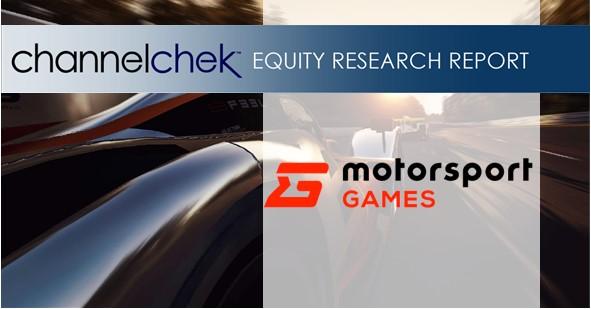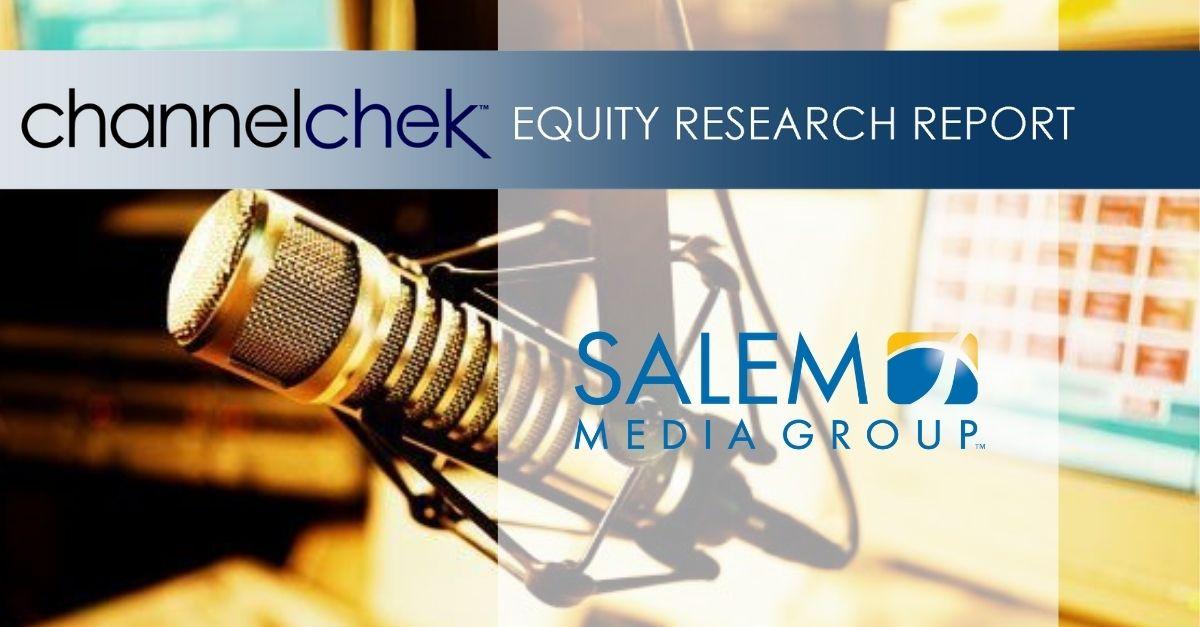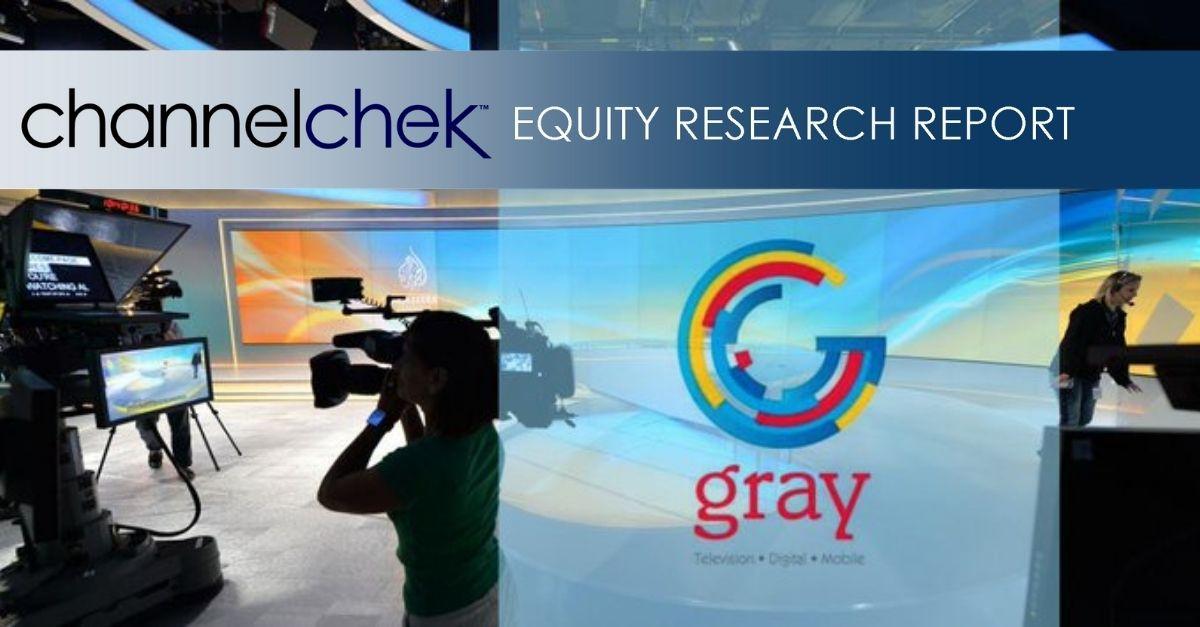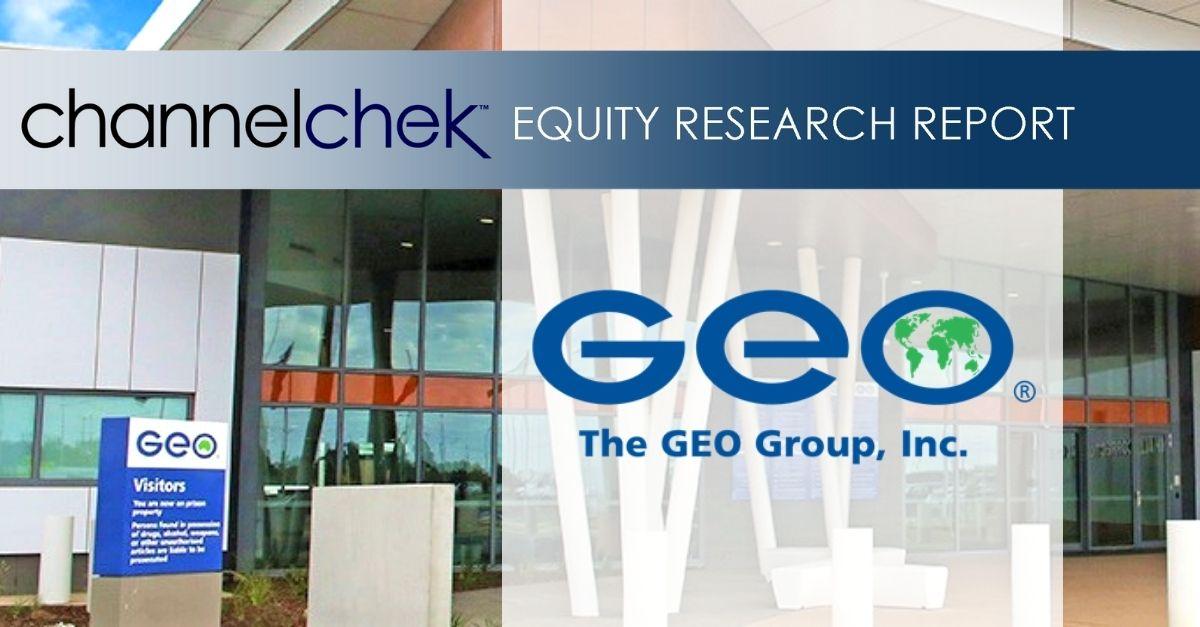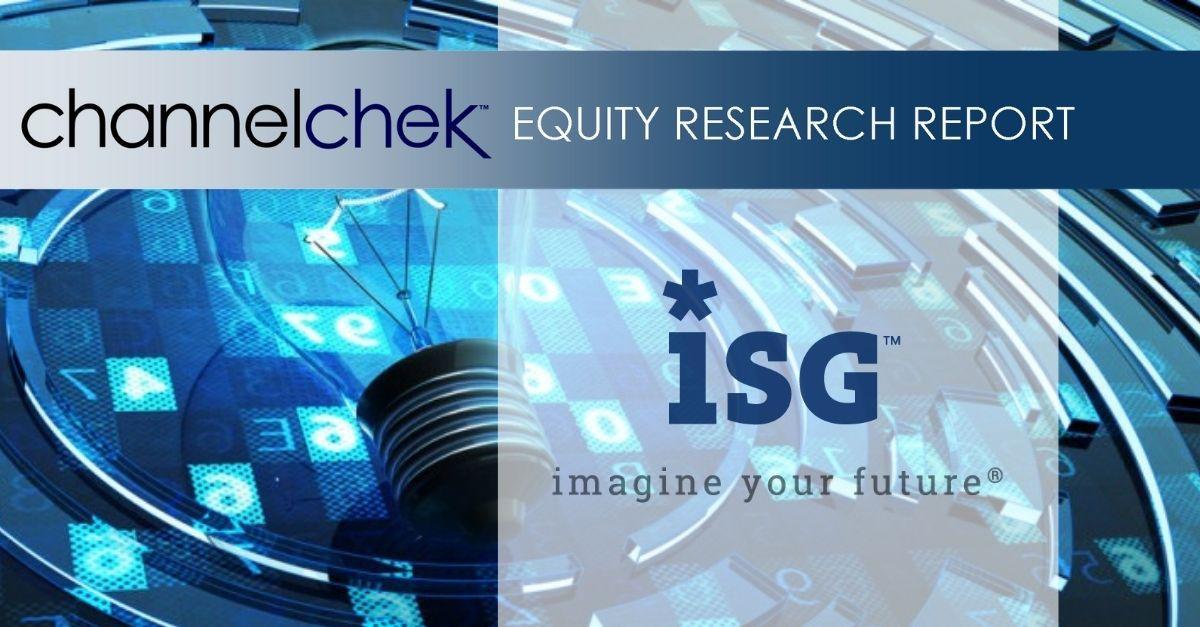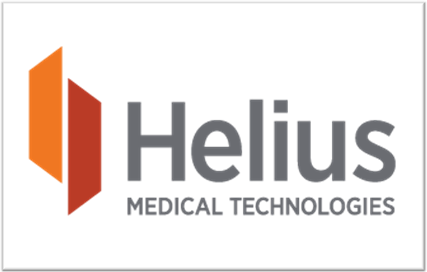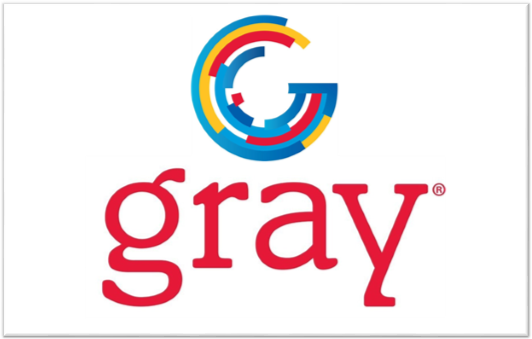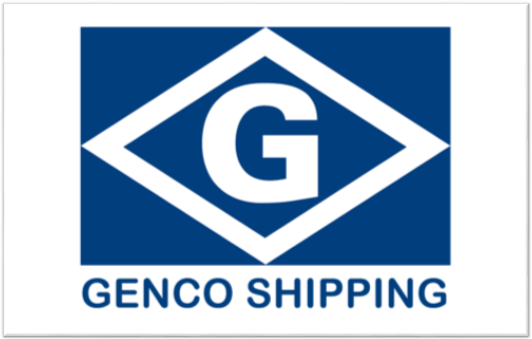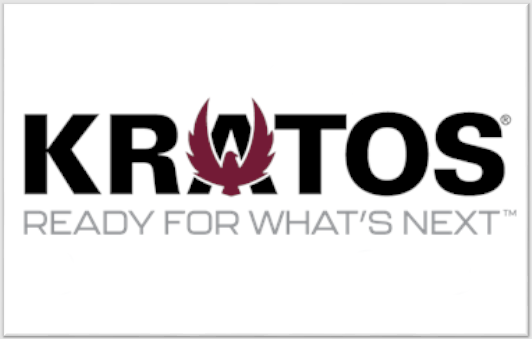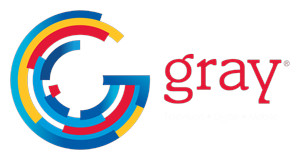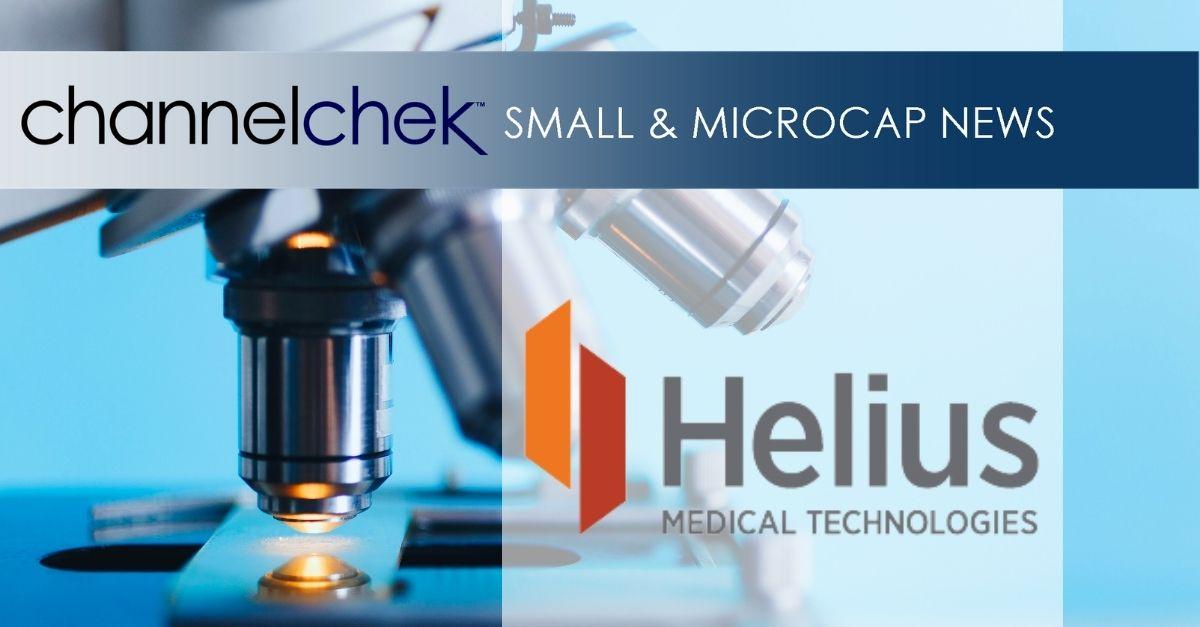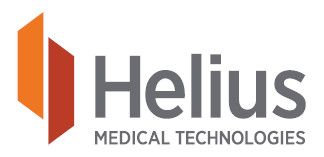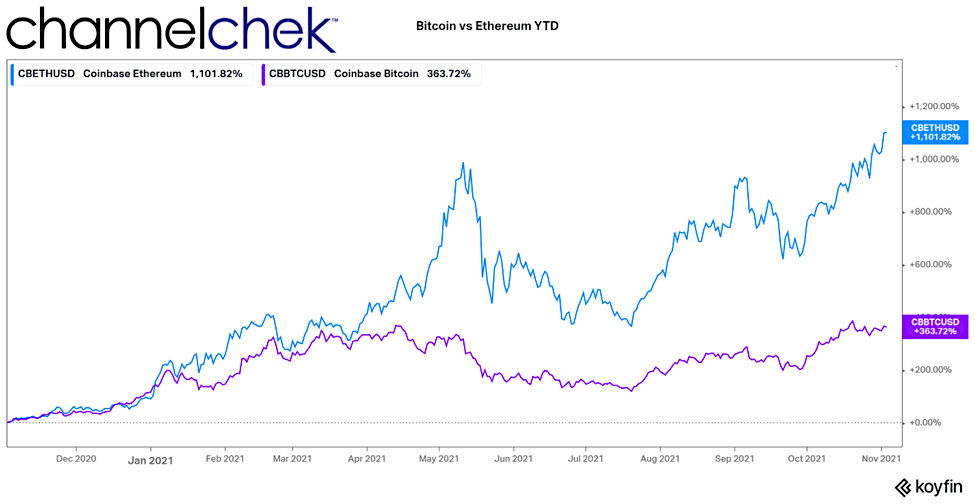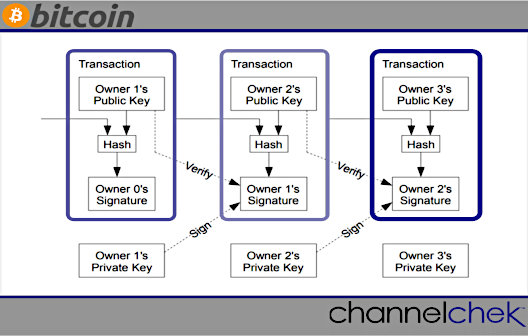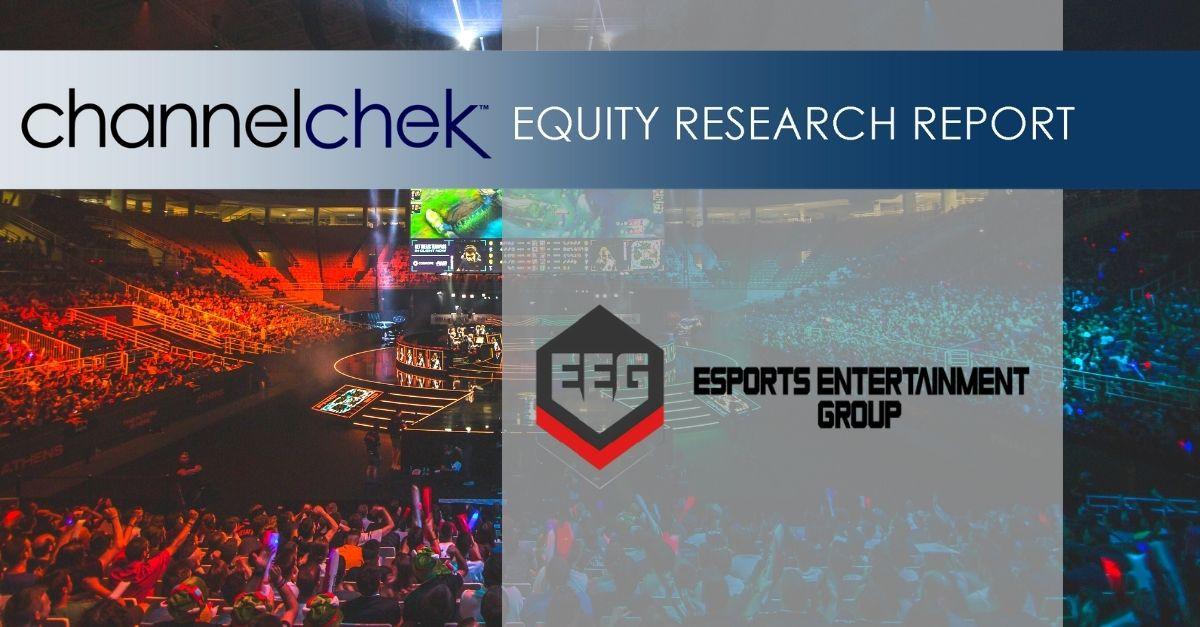
Kratos Reports Third Quarter Financial Results
Third Quarter Revenues of $200.6 Million
Third Quarter Space, Satellite and Cyber Busines Revenues of $72.0 million Increased Organically 17.5 percent over the Third Quarter of 2020
Third Quarter Unmanned Systems Segment Revenues of $61.3 Million, Increased Organically 14.6 percent over Third Quarter 2020
Third Quarter 2021 Consolidated Book to Bill Ratio of 0.9 to 1
Last Twelve Months Ended September 26, 2021 Consolidated Book to Bill Ratio of 1.0 to 1
Third Quarter 2021 Unmanned Systems Book to Bill Ratio of 1.1 to 1
Last Twelve Months Ended September 26, 2021 Unmanned Systems Book to Bill Ratio of 1.0 to 1
SAN DIEGO,
Nov. 03, 2021 (GLOBE NEWSWIRE) —
Kratos Defense & Security Solutions, Inc. (Nasdaq:KTOS), a leading National Security Solutions provider, today reported its third quarter 2021 financial results. For the third quarter of 2021, Kratos reported Revenues of
$200.6 million, Operating Income of
$10.5 million, Net Loss of
$2.4 million and Adjusted EBITDA of
$23.8 million. Included in Net Loss is a tax provision of
$5.7 million on Income before taxes of
$4.6 million, primarily reflecting the non-deductibility of certain non-cash stock compensation expense.
Kratos reported third quarter 2021 Net Loss of
$2.4 million, and GAAP EPS loss of
$0.02, compared to Net Income of
$2.4 million and GAAP EPS income of
$0.02 for the third quarter of 2020. Adjusted EPS was
$0.09 for the third quarter of 2021 compared to
$0.09 for the third quarter of 2020. The Company has approximately
$280 million of net operating loss carryforwards, which are expected to substantially shield Kratos from paying future cash income taxes.
Third quarter 2021 Revenues of
$200.6 million decreased from third quarter 2020 Revenues of
$202.0 million, reflecting a reduction of legacy government services revenues of
$6.2 million, down from
$17.4 million in the third quarter of 2020 to
$11.2 million in the third quarter of 2021 and a
$5.5 million year over year decrease resulting from a previously disclosed reduction of certain international contracts in our Training Solutions business, offset partially by increased revenues in our Space, Satellite and Cyber business. On a pro forma basis, excluding these reductions, Revenue grew organically 5.8 percent in the third quarter of 2021, as compared to the third quarter of 2020. Third quarter 2021 revenues were negatively impacted by supply chain delays, increased lead times for delivery of necessary components, and customer delays and travel restrictions primarily in our Space and Satellite and C5ISR businesses, resulting in expected revenues of approximately
$8.3 million being deferred into future periods.
Operating Income of
$10.5 million in the third quarter of 2021 decreased from
$12.7 million in the third quarter of 2020, with third quarter 2021 Operating Income including increases in non-cash stock-based compensation expense of
$1.4 million and R&D of
$0.3 million over the third quarter of 2020. Third Quarter 2021 Adjusted EBITDA of
$23.8 million decreased from
$24.6 million in the third quarter of 2020, primarily reflecting increases in SG&A costs, including increased headcount in our Unmanned Systems business, offset partially by a more favorable mix of revenues.
Third quarter 2021 Cash Flow Generated from Operations was
$12.6 million, and Free Cash Flow Used from Operations was
$0.3 million, after funding
$12.9 million of capital expenditures, including in our high growth Unmanned Systems, Space, Satellite and Cyber business and Turbine Engine business areas. For the nine months ended
September 26, 2021, Cash Flow Generated from Operations was
$34.6 million, and Free Cash Flow Generated from Operations was
$1.2 million, after funding
$33.4 million of capital expenditures. Cash on hand on
September 26, 2021 was
$369.9 million.
For the third quarter of 2021, Kratos’ Unmanned Systems Segment (KUS) Revenues of
$61.3 million increased 14.6 percent, as compared to
$53.5 million in the third quarter of 2020, and KUS operating income decreased from
$3.7 million in the third quarter of 2020 to
$2.6 million in the third quarter of 2021, primarily due to a less favorable mix of revenues including an increase in development programs, which typically generate lower margins, and due to an increase in SG&A costs, including costs related to increased headcount.
Third quarter 2021 KUS Adjusted EBITDA of
$4.7 million decreased from third quarter 2020 Adjusted EBITDA of
$5.6 million, primarily reflecting increases in certain development programs, including in the tactical drone area, which typically generate lower margins, and due to an increase in SG&A costs, including costs related to increased headcount.
KUS’s book-to-bill ratio for the third quarter of 2021 was 1.1 to 1.0 and 1.0 to 1.0 for the last twelve months ended
September 26, 2021, with bookings of
$230.5 million for the twelve months ended
September 26, 2021. Total backlog for KUS at the end of the third quarter of 2021 was
$194.5 million, up from
$185.4 million at the end of the second quarter of 2021, and up from
$189.5 million at the end of the third quarter of 2020.
For the third quarter of 2021, Kratos’ Government Solutions Segment (KGS) reported Revenues of
$139.3 million, down from revenues of
$148.5 million in the third quarter of 2020, reflecting a reduction of legacy services revenues of
$6.2 million and a reduction of
$5.5 million from an international training contract. These reductions were partially offset by organic growth in our Space, Satellite and Cyber and Turbine Technologies businesses. KGS reported operating income of
$14.6 million, up from operating income of
$14.1 million in the third quarter of 2020, primarily reflecting a more favorable revenue mix in the Company’s Space, Satellite and Cyber and Turbine Technologies businesses.
Kratos’ Space, Satellite and Cyber business generated Revenues of
$72.0 million in the third quarter of 2021, an organic increase of 17.5 percent over the third quarter of 2020 Revenues of
$61.3 million.
Third quarter 2021 KGS Adjusted EBITDA of
$19.1 million increased from third quarter 2020 Adjusted EBITDA of
$19.0 million, reflecting a more favorable mix of revenues, primarily in the Space, Satellite and Cyber and Turbine Technologies businesses.
For the third quarter of 2021, KGS reported a book-to-bill ratio of 0.7 to 1.0, and a book to bill ratio of 0.9 to 1 for the twelve months ended
September 26, 2021. Included in KGS is Kratos’ Space, Cyber and Training business, which reported a book to bill ratio for the twelve months ended
September 26, 2021 was 1.1 to 1. KGS’s total backlog at the end of the third quarter of 2021 was
$644.6 million, down from
$680.2 million at the end of the second quarter of 2021, and down from
$683.6 million at the end of the third quarter of 2020.
For the third quarter of 2021, Kratos reported consolidated bookings of
$174.2 million and a book-to-bill ratio of 0.9 to 1.0, with consolidated bookings of
$770.9 million and a book-to-bill ratio of 1.0 to 1.0 for the last twelve months ended
September 26, 2021. Backlog on
September 26, 2021 was
$839.1 million, down sequentially from
$865.6 million at
June 27, 2021 and down from
$873.1 million at
September 27, 2020, and Kratos’ bid and proposal pipeline was
$9.1 billion at
September 26, 2021. Backlog at
September 26, 2021 was comprised of funded backlog of
$618.0 million and unfunded backlog of
$221.1 million.
Eric DeMarco, Kratos’ President and CEO, said, “Since our last report to you, we have received approximately
$374 million in sole source, single award target drone related contracts, of which we expect to realize substantially the entire IDIQ amount in Kratos’ revenue over the period of performance. We have successfully competed for and received a
U.S. Air Force Off-Board Sensing Station affordable tactical jet drone program award, which we believe has potential future opportunity similar to Kratos’ Valkyrie, Gremlins, Air Wolf and Thanatos programs. Our tactical drone related programs continue to progress, including a recent successful series of customer flights for Kratos’ Air Wolf drone and Thanatos. And on
August 16, the
Air Force reiterated its commitment to be ready for a 2023 Skyborg Vanguard Program of Record, under which Kratos’ Valkyrie and Mako jet drones are recognized participants.”
Mr. DeMarco, concluded, “Though we expect COVID related, supply chain and customer issues the industry and Kratos are experiencing to continue, there is no change in Kratos’ expected up and to the right long term organic growth profile with increasing profit margins. Kratos is the growth leader in space, satellite communications and unmanned drone systems as reflected in our results today and our C5ISR, Rocket System and Next Generation Engine businesses are also positioned to be future growth leaders. We continue to win new strategic program awards like OBSS, we believe the pending 2022
DoD budget is favorable for Kratos, we have a number of programs transitioning from development to production, with others expecting increased production and our bid pipeline now stands at approximately
$9.1 billion.”
Financial Guidance
We are adjusting our 2021 Revenue guidance range from
$810 million –
$850 million to
$805 million –
$815 million, primarily to reflect continued and increased supply chain and customer delays, and COVID related quarantine issues and restrictions, including where we are unable to enter certain countries to execute on or deliver systems for customers. This adjustment primarily reflects over
$31 million of under contract revenue that has been deferred from our 2021 third or fourth quarters to future periods, including in our satellite, microwave electronics and C5ISR businesses. We expect supply chain, customer and COVID related disruptions and delays to continue industry wide and as related to Kratos for the foreseeable future, which we are taking into consideration in our future forecasts. The adjustment also reflects a recent Kratos customer re-baselined execution plan and schedule, on a greater than
$150 million C5ISR under contract Kratos program, which shifted certain tasks into future periods, including 2023. At the midpoint of this revenue range of
$810 million, excluding the ASC acquisition and the international training contract, Kratos revenues are forecasted to grow organically over 8 percent year over year from 2020 to 2021.
We are adjusting our Full Year 2021 EBITDA Guidance range of
$81 –
$87 million to
$80 –
$84 million to reflect the impact of the revenues shifted from our third and fourth quarters to future periods. We are improving our 2021 free cash flow use from operations guidance of
$30 –
$40 million to a use of
$20 –
$30 million, to reflect expected reductions in our Days Sales Outstanding (DSOs) and increased collections, and lower than initially forecast capital and other investments, as certain initiatives are ahead of schedule, under budget or reduced for other reasons.
| $M |
Q421 |
FY21 |
| Revenues |
$205 –
$215
|
$805 –
$815
|
| R&D |
$8 – 10 |
$35 –
$37
|
| Operating Income |
$7 –
$9
|
$26 –
$29
|
| Depreciation |
$5 –
$6
|
$21 –
$22
|
| Amortization |
$2
|
$6 –
$7
|
| Stock Based Compensation |
$6 –
$7
|
$26
|
| Adjusted EBITDA |
$20 –
$24
|
$80 –
$84
|
| |
|
|
| Operating Cash Flow |
|
$25 –
$30
|
| Capital Expenditures |
|
$45 –
$55
|
| Free Cash Flow Use |
|
(
$20 –
$30) |
The full year 2021 estimated Operating Cash Flow includes approximately
$5 –
$6 million of planned investments in our Rocket Support Systems and Engine businesses for new products, including in the Hypersonic area, and efforts to increase Kratos’ market share, as well as approximately
$5 million of the required payback of the 2020 deferred employer related payroll taxes. The 2021 capital expenditure forecast currently includes expected outlays of approximately
$25 million associated with the continued production of Valkyrie aircraft and related equipment prior to receipt of expected customer award(s); therefore, these aircraft are currently reflected as Company-owned assets until receipt of the related customer award(s). Kratos will adjust the forecasted capital expenditure outlays and the ultimate balance sheet classification of these investments once expected customer orders and the nature of the contract terms can be determined. In addition, the capital expenditure forecast includes investments in the Company’s Space, Satellite and Cyber business secure facilities and the Company-owned space domain awareness network, capital investments related to the recent GBSD (Ground Based Strategic Deterrent) award, and investments related to the Company’s Turbine and Rocket Support Systems businesses.
There is currently no Federal Fiscal Year 2022 (
October 1, 2021 –
September 30, 2022) defense budget in place and the defense industry is operating under a Federal Budget Continuing Resolution Authorization (CRA). Under a CRA, there are no new start program awards or new programs of record, no increases in production on existing programs, and no transition from existing development programs to production, among other items, all which impact Kratos. The existing CRA expires on
December 3, 2021. The ultimate approved and authorized 2022
DoD budget and its timing is unknown at this time, though the longer the CRA continues, the greater the impact on the industry and the Company.
On
September 9, 2021 the President issued an Executive Order mandating that by
December 8, 2021, all Federal Contractor employees must be fully vaccinated against Covid 19, unless excluded by certain limited exemptions. The Company is moving to comply with the President’s Executive Order. As a result of the President’s Executive Order, the Company (and its subcontractors, suppliers, partners, etc.) is experiencing certain disruptions, including but not limited to employee unrest, retirements, resignations, etc. and other situations that we had not previously anticipated or planned for prior to the Executive Order, all of which we are monitoring.
Management will discuss the Company’s third quarter 2021 financial results, as well as its fourth quarter and full year 2021 guidance on a conference call beginning at
2:00 p.m. Pacific (
5:00 p.m. Eastern) today. Analysts and institutional investors may participate in the conference call by dialing (866) 393-0674, and referencing the call by ID number 6477329. The general public may access the conference call by dialing (877) 344-3935 or on the day of the event by visiting www.kratosdefense.com for a simultaneous webcast. A replay of the webcast will be available on the Kratos web site approximately two hours after the conclusion of the conference call.
About Kratos Defense & Security Solutions
Kratos Defense & Security Solutions, Inc. (NASDAQ:KTOS) develops and fields transformative, affordable technology, platforms, and systems for United States National Security related customers, allies, and commercial enterprises. Kratos is changing the way breakthrough technologies for these industries are rapidly brought to market through proven commercial and venture capital backed approaches, including proactive research, and streamlined development processes. At Kratos, affordability is a technology, and we specialize in unmanned systems, satellite communications, cyber security/warfare, microwave electronics, missile defense, hypersonic systems, training and combat systems and next generation turbo jet and turbo fan engine development. For more information go to www.kratosdefense.com.
Notice Regarding Forward–Looking Statements
This news release contains certain forward-looking statements that involve risks and uncertainties, including, without limitation, express or implied statements concerning the Company’s expectations regarding its future financial performance, including the Company’s expectations for its fourth quarter and full year 2021 revenue, R&D, operating income, depreciation, amortization, stock based compensation expense, and Adjusted EBITDA, and full year 2021 operating cash flow, capital expenditures and other investments, and free cash flow, the Company’s future growth trajectory and ability to achieve improved revenue mix and profit in certain of its business segments and the expected timing of such revenue and profit, the Company’s expectation of ramp on projects and that investments in its business will result in an increase in the Company’s market share and total addressable market and position the Company for significant future organic growth, profitability, cash flow and shareholder value, the Company’s bid and proposal pipeline, demand for its products and services, including the Company’s alignment with today’s National Security requirements and expectation that the 2022
DoD budget will be favorable for the Company, ability to successfully compete in the tactical unmanned aerial system area and expected new customer awards, including the magnitude and timing of funding and the future opportunity associated with such awards, and expected contract awards related to the Company’s Skyborg Vanguard program and other new tactical unmanned programs, performance of key contracts and programs, including the timing of production and demonstration related to certain of the Company’s contracts and product offerings, the impact of the Company’s restructuring efforts and cost reduction measures, including its ability to improve profitability and cash flow in certain business units as a result of these actions, benefits to be realized from the Company’s net operating loss carry forwards, the availability and timing of government funding for the Company’s offerings, including the strength of the future funding environment, the short-term delays that may occur as a result of Continuing Resolutions or delays in
DoD budget approvals, timing of LRIP and full rate production related to the Company’s unmanned aerial target system offerings, as well as the level of recurring revenues expected to be generated by these programs once they achieve full rate production, market and industry developments, and the current estimated impact of COVID-19 and supply chain disruptions and delays on our financial projections, industry, business and operations, including projected growth. Such statements are only predictions, and the Company’s actual results may differ materially from the results expressed or implied by these statements. Investors are cautioned not to place undue reliance on any such forward-looking statements. All such forward-looking statements speak only as of the date they are made, and the Company undertakes no obligation to update or revise these statements, whether as a result of new information, future events or otherwise. Factors that may cause the Company’s results to differ include, but are not limited to: risks to our business and financial results related to the reductions and other spending constraints imposed on the
U.S. Government and our other customers, including as a result of sequestration and extended continuing resolutions, the Federal budget deficit and Federal government shut-downs; risks of adverse regulatory action or litigation; risks associated with debt leverage and cost savings and cash flow improvements expected as a result of the refinancing of our Senior Notes; risks that our cost-cutting initiatives will not provide the anticipated benefits; risks that changes, cutbacks or delays in spending by the
U.S.
DoD may occur, which could cause delays or cancellations of key government contracts; risks of delays to or the cancellation of our projects as a result of protest actions submitted by our competitors; risks that changes may occur in Federal government (or other applicable) procurement laws, regulations, policies and budgets; risks of the availability of government funding for the Company’s products and services due to performance, cost growth, or other factors, changes in government and customer priorities and requirements (including cost-cutting initiatives, the potential deferral of awards, terminations or reduction of expenditures to respond to the priorities of
Congress and the Administration, or budgetary cuts resulting from Congressional committee recommendations or automatic sequestration under the Budget Control Act of 2011, as amended); risks that the UAS and UGS markets do not experience significant growth; risks that we cannot expand our customer base or that our products do not achieve broad acceptance which could impact our ability to achieve our anticipated level of growth; risks of increases in the Federal government initiatives related to in-sourcing; risks related to security breaches, including cyber security attacks and threats or other significant disruptions of our information systems, facilities and infrastructures; risks related to our compliance with applicable contracting and procurement laws, regulations and standards; risks related to the new DoD Cybersecurity Maturity Model Certification (CMMC); risks related to contract performance; risks related to failure of our products or services; risks associated with our subcontractors’ or suppliers’ failure to perform their contractual obligations, including the appearance of counterfeit or corrupt parts in our products; changes in the competitive environment (including as a result of bid protests); failure to successfully integrate acquired operations and competition in the marketplace, which could reduce revenues and profit margins; risks that potential future goodwill impairments will adversely affect our operating results; risks that anticipated tax benefits will not be realized in accordance with our expectations; risks that a change in ownership of our stock could cause further limitation to the future utilization of our net operating losses; risks that we may be required to record valuation allowances on our net operating losses which could adversely impact our profitability and financial condition; risks that the current economic environment will adversely impact our business; currently unforeseen risks associated with COVID-19 and risks related to natural disasters or severe weather. These and other risk factors are more fully discussed in the Company’s Annual Report on Form 10-K for the period ended
December 27, 2020, and in our other filings made with the
Securities and Exchange Commission.
Note Regarding Use of Non-GAAP Financial Measures and Other Performance Metrics
This news release contains non-GAAP financial measures, including Adjusted earnings per share (computed using income from continuing operations before income taxes, excluding income (loss) from discontinued operations, excluding income (loss) attributable to non-controlling interest, excluding depreciation, amortization of intangible assets, amortization of capitalized contract and development costs, stock-based compensation expense, acquisition and restructuring related items and other, which includes but is not limited to legal related items and foreign transaction gains and losses, less the estimated impact to income taxes) and including Adjusted EBITDA (which includes net income (loss) attributable to noncontrolling interest and excludes, among other things, losses and gains from discontinued operations, acquisition and restructuring related items, stock compensation expense, foreign transaction gains and losses, and the associated margin rates). Additional non-GAAP financial measures include Free Cash Flow from Operations computed as Cash Flow from Operations less Capital Expenditures and Adjusted EBITDA related to our KUS and KGS businesses. Kratos believes this information is useful to investors because it provides a basis for measuring the Company’s available capital resources, the actual and forecasted operating performance of the Company’s business and the Company’s cash flow, excluding non-recurring items and non-cash items that would normally be included in the most directly comparable measures calculated and presented in accordance with GAAP. The Company’s management uses these non-GAAP financial measures along with the most directly comparable GAAP financial measures in evaluating the Company’s actual and forecasted operating performance, capital resources and cash flow. Non-GAAP financial measures should not be considered in isolation from, or as a substitute for, financial information presented in compliance with GAAP, and investors should carefully evaluate the Company’s financial results calculated in accordance with GAAP and reconciliations to those financial statements. In addition, non-GAAP financial measures as reported by the Company may not be comparable to similarly titled amounts reported by other companies. As appropriate, the most directly comparable GAAP financial measures and information reconciling these non-GAAP financial measures to the Company’s financial results prepared in accordance with GAAP are included in this news release.
Another Performance Metric the Company believes is a key performance indicator in our industry is our Book to
Bill Ratio as it provides investors with a measure of the amount of bookings or contract awards as compared to the amount of revenues that have been recorded during the period, and provides an indicator of how much of the Company’s backlog is being burned or utilized in a certain period. The Book to
Bill Ratio is computed as the number of bookings or contract awards in the period divided by the revenues recorded for the same period. The Company believes that the rolling or last twelve months Book to
Bill Ratio is meaningful since the timing of quarter-to-quarter bookings can vary.
Press Contact:
Yolanda White
858-812-7302 Direct
Investor Information:
877-934-4687
investor@kratosdefense.com
| Kratos Defense & Security Solutions, Inc. |
| Unaudited Condensed Consolidated Statements of Operations |
| (in millions, except per share data) |
| |
|
|
|
|
|
|
|
|
| |
|
Three Months Ended |
|
Nine Months Ended |
| |
|
September 26, |
|
September 27, |
|
September 26, |
|
September 27, |
| |
|
|
2021 |
|
|
|
2020 |
|
|
|
2021 |
|
|
|
2020 |
|
| |
|
|
|
|
|
|
|
|
| Service revenues |
|
$ |
51.6 |
|
|
$ |
67.6 |
|
|
$ |
166.9 |
|
|
$ |
194.1 |
|
| Product sales |
|
|
149.0 |
|
|
|
134.4 |
|
|
|
433.0 |
|
|
|
347.2 |
|
| Total revenues |
|
|
200.6 |
|
|
|
202.0 |
|
|
|
599.9 |
|
|
|
541.3 |
|
| Cost of service revenues |
|
|
35.5 |
|
|
|
50.5 |
|
|
|
119.3 |
|
|
|
141.9 |
|
| Cost of product sales |
|
|
104.5 |
|
|
|
94.4 |
|
|
|
317.0 |
|
|
|
250.5 |
|
| Total costs |
|
|
140.0 |
|
|
|
144.9 |
|
|
|
436.3 |
|
|
|
392.4 |
|
| Gross profit – service revenues |
|
|
16.1 |
|
|
|
17.1 |
|
|
|
47.6 |
|
|
|
52.2 |
|
| Gross profit – product sales |
|
|
44.5 |
|
|
|
40.0 |
|
|
|
116.0 |
|
|
|
96.7 |
|
| |
|
|
|
|
|
|
|
|
| Total gross profit |
|
|
60.6 |
|
|
|
57.1 |
|
|
|
163.6 |
|
|
|
148.9 |
|
| |
|
|
|
|
|
|
|
|
| Selling, general and administrative expenses |
|
|
39.6 |
|
|
|
33.1 |
|
|
|
110.5 |
|
|
|
97.3 |
|
| Acquisition and restructuring related items |
|
|
0.3 |
|
|
|
0.4 |
|
|
|
0.8 |
|
|
|
2.0 |
|
| Research and development expenses |
|
|
8.0 |
|
|
|
7.7 |
|
|
|
26.2 |
|
|
|
19.4 |
|
| Depreciation |
|
|
1.1 |
|
|
|
1.5 |
|
|
|
3.7 |
|
|
|
4.5 |
|
| Amortization of intangible assets |
|
|
1.1 |
|
|
|
1.7 |
|
|
|
3.7 |
|
|
|
5.4 |
|
| Operating income |
|
|
10.5 |
|
|
|
12.7 |
|
|
|
18.7 |
|
|
|
20.3 |
|
| Interest expense, net |
|
|
(5.9 |
) |
|
|
(5.9 |
) |
|
|
(17.5 |
) |
|
|
(16.9 |
) |
| Other income, net |
|
|
– |
|
|
|
0.8 |
|
|
|
0.2 |
|
|
|
0.6 |
|
| Income from continuing operations before income taxes |
|
|
4.6 |
|
|
|
7.6 |
|
|
|
1.4 |
|
|
|
4.0 |
|
| Provision (benefit) for income taxes from continuing operations |
|
|
5.7 |
|
|
|
5.0 |
|
|
|
(0.6 |
) |
|
|
1.8 |
|
| Income (loss) from continuing operations |
|
|
(1.1 |
) |
|
|
2.6 |
|
|
|
2.0 |
|
|
|
2.2 |
|
| Loss from discontinued operations, net of income taxes |
|
|
(0.8 |
) |
|
|
(0.2 |
) |
|
|
(1.1 |
) |
|
|
(0.8 |
) |
| Net income (loss) |
|
|
(1.9 |
) |
|
|
2.4 |
|
|
|
0.9 |
|
|
|
1.4 |
|
| Less: Net income (loss) attributable to noncontrolling interest |
|
|
0.5 |
|
– |
|
– |
|
|
|
0.3 |
|
|
|
(0.1 |
) |
| Net income (loss) attributable to Kratos |
|
$ |
(2.4 |
) |
|
$ |
2.4 |
|
|
$ |
0.6 |
|
|
$ |
1.5 |
|
| |
|
|
|
|
|
|
|
|
| Basic income (loss) per common share attributable to Kratos: |
|
|
|
|
|
|
|
|
| Income (loss) from continuing operations |
|
$ |
(0.01 |
) |
|
$ |
0.02 |
|
|
$ |
0.01 |
|
|
$ |
0.02 |
|
| Loss from discontinued operations |
|
|
(0.01 |
) |
|
|
– |
|
|
|
(0.01 |
) |
|
|
(0.01 |
) |
| Net income (loss) |
|
|
(0.02 |
) |
|
$ |
0.02 |
|
|
$ |
– |
|
|
$ |
0.01 |
|
| |
|
|
|
|
|
|
|
|
| Diluted income (loss) per common share attributable to Kratos: |
|
|
|
|
|
|
|
|
| Income (loss) from continuing operations |
|
$ |
(0.01 |
) |
|
$ |
0.02 |
|
|
$ |
0.01 |
|
|
$ |
0.02 |
|
| Loss from discontinued operations |
|
|
(0.01 |
) |
|
|
– |
|
|
|
(0.01 |
) |
|
|
(0.01 |
) |
| Net income (loss) |
|
$ |
(0.02 |
) |
|
$ |
0.02 |
|
|
$ |
– |
|
|
$ |
0.01 |
|
| |
|
|
|
|
|
|
|
|
| Weighted average common shares outstanding: |
|
|
|
|
|
|
|
|
| Basic weighted average common shares outstanding |
|
|
124.9 |
|
|
|
123.1 |
|
|
|
124.6 |
|
|
|
112.9 |
|
| Diluted weighted average common shares outstanding |
|
|
124.9 |
|
|
|
126.4 |
|
|
|
127.9 |
|
|
|
115.9 |
|
| |
|
|
|
|
|
|
|
|
| Adjusted EBITDA (1) |
|
$ |
23.8 |
|
|
$ |
24.6 |
|
|
$ |
59.5 |
|
|
$ |
56.2 |
|
| |
|
|
|
| Unaudited Reconciliation of GAAP to Non-GAAP Measures |
| |
| Note: (1) Adjusted EBITDA is a non-GAAP measure defined as GAAP net income (loss) attributable to Kratos adjusted for net income (loss) attributable to noncontrolling interest, income (loss) from discontinued operations, net interest expense, provision for income taxes, depreciation and amortization expense of intangible assets, amortization of capitalized contract and development costs, stock-based compensation, acquisition and restructuring related items and other, and foreign transaction gain (loss). |
| |
| Adjusted EBITDA as calculated by us may be calculated differently than Adjusted EBITDA for other companies. We have provided Adjusted EBITDA because we believe it is a commonly used measure of financial performance in comparable companies and is provided to help investors evaluate companies on a consistent basis, as well as to enhance understanding of our operating results. Adjusted EBITDA should not be construed as either an alternative to net income or as an indicator of our operating performance or an alternative to cash flows as a measure of liquidity. The adjustments to calculate this non-GAAP financial measure and the basis for such adjustments are outlined below. Please refer to the following table below that reconciles GAAP net income (loss) to Adjusted EBITDA. |
| |
| The adjustments to calculate this non-GAAP financial measure, and the basis for such adjustments, are outlined below: |
| |
| Interest income and interest expense, net. The Company receives interest income on investments and incurs interest expense on loans, capital leases and other financing arrangements, including the amortization of issue discounts and deferred financing costs. These amounts may vary from period to period due to changes in cash and debt balances. |
| |
| Income taxes. The Company’s tax expense can fluctuate materially from period to period due to tax adjustments that may not be directly related to underlying operating performance or to the current period of operations and may not necessarily reflect the impact of utilization of our NOLs. |
| |
| Depreciation. The Company incurs depreciation expense (recorded in cost of revenues and in operating expenses) related to capital assets purchased, leased or constructed to support the ongoing operations of the business. The assets are recorded at cost or fair value and are depreciated over the estimated useful lives of individual assets. |
| |
| Amortization of intangible assets. The Company incurs amortization of intangible expense related to acquisitions it has made. These intangible assets are valued at the time of acquisition and are amortized over the estimated useful lives. |
| |
| Amortization of capitalized contract and development costs. The Company incurs amortization of previously capitalized software development and non-recurring engineering costs related to certain targets in its Unmanned Systems and ballistic missile target businesses as these units are sold. |
| |
| Stock-based compensation expense. The Company incurs expense related to stock-based compensation included in its GAAP presentation of selling, general and administrative expense. Although stock-based compensation is an expense of the Company and viewed as a form of compensation, these expenses vary in amount from period to period, and are affected by market forces that are difficult to predict and are not within the control of management, such as the market price and volatility of the Company’s shares, risk-free interest rates and the expected term and forfeiture rates of the awards. Management believes that exclusion of these expenses allows comparison of operating results to those of other companies that disclose non-GAAP financial measures that exclude stock-based compensation. |
| |
Foreign transaction (gain) loss. The Company incurs transaction gains and losses related to transactions with foreign customers in currencies other than the
U.S. dollar. In addition, certain intercompany transactions can give rise to realized and unrealized foreign currency gains and losses. |
| |
| Acquisition and transaction related items. The Company incurs transaction related costs, such as legal and accounting fees and other expenses, related to acquisitions and divestiture activities. Management believes these items are outside the normal operations of the Company’s business and are not indicative of ongoing operating results. |
| |
| Restructuring costs. The Company incurs restructuring costs for cost reduction actions which include employee termination costs, facility shut-down related costs and remaining lease commitment costs for excess or exited facilities. Management believes that these costs are not indicative of ongoing operating results as they are either non-recurring and/or not expected when full capacity and volumes are achieved. |
| |
| Legal related items. The Company incurs costs related to pending legal settlements and other legal related matters. Management believes these items are outside the normal operations of the Company’s business and are not indicative of ongoing operating results. |
| |
| Adjusted EBITDA is a non-GAAP financial measure and should not be considered in isolation or as a substitute for financial information provided in accordance with GAAP. This non-GAAP financial measure may not be computed in the same manner as similarly titled measures used by other companies. The Company expects to continue to incur expenses similar to the Adjusted EBITDA financial adjustments described above, and investors should not infer from the Company’s presentation of this non-GAAP financial measure that these costs are unusual, infrequent, or non-recurring. |
| Reconciliation of Net income attributable to Kratos to Adjusted EBITDA is as follows: |
|
|
|
|
|
|
|
|
| |
|
|
|
|
|
|
|
|
| |
|
Three Months Ended |
|
Nine Months Ended |
| |
|
September 26, |
|
September 27, |
|
September 26, |
|
September 27, |
| |
|
|
2021 |
|
|
|
2020 |
|
|
|
2021 |
|
|
|
2020 |
|
| |
|
|
|
|
|
|
|
|
| Net income (loss) attributable to Kratos |
|
$ |
(2.4 |
) |
|
$ |
2.4 |
|
|
$ |
0.6 |
|
|
$ |
1.5 |
|
| Loss from discontinued operations, net of income taxes |
|
|
0.8 |
|
|
|
0.2 |
|
|
|
1.1 |
|
|
|
0.8 |
|
| Interest expense, net |
|
|
5.9 |
|
|
|
5.9 |
|
|
|
17.5 |
|
|
|
16.9 |
|
| Provision (benefit) for income taxes from continuing operations |
|
|
5.7 |
|
|
|
5.0 |
|
|
|
(0.6 |
) |
|
|
1.8 |
|
| Depreciation (including cost of service revenues and product sales) |
|
|
5.0 |
|
|
|
4.5 |
|
|
|
15.7 |
|
|
|
13.1 |
|
| Stock-based compensation |
|
|
6.4 |
|
|
|
5.0 |
|
|
|
19.2 |
|
|
|
14.5 |
|
| Foreign transaction (gain) loss |
|
|
0.2 |
|
|
|
(0.7 |
) |
|
|
0.4 |
|
|
|
(0.4 |
) |
| Amortization of intangible assets |
|
|
1.1 |
|
|
|
1.7 |
|
|
|
3.7 |
|
|
|
5.4 |
|
| Amortization of capitalized contract and development costs |
|
|
0.3 |
|
|
|
0.2 |
|
|
|
0.8 |
|
|
|
0.7 |
|
| Acquisition and restructuring related items and other |
|
|
0.3 |
|
|
|
0.4 |
|
|
|
0.8 |
|
|
|
2.0 |
|
| Plus: Net income (loss) attributable to noncontrolling interest |
|
|
0.5 |
|
|
|
– |
|
|
|
0.3 |
|
|
|
(0.1 |
) |
| |
|
|
|
|
|
|
|
|
| Adjusted EBITDA |
|
$ |
23.8 |
|
|
$ |
24.6 |
|
|
$ |
59.5 |
|
|
$ |
56.2 |
|
| |
|
|
|
|
|
|
|
|
| |
|
|
|
|
|
|
|
|
| Reconciliation of acquisition and restructuring related items and other included in Adjusted EBITDA: |
|
|
|
|
|
|
| |
|
Three Months Ended |
|
Nine Months Ended |
| |
|
September 26, |
|
September 27, |
|
September 26, |
|
September 27, |
| |
|
|
2021 |
|
|
|
2020 |
|
|
|
2021 |
|
|
|
2020 |
|
| Acquisition and transaction related items |
|
$ |
0.3 |
|
|
$ |
0.1 |
|
|
$ |
0.6 |
|
|
$ |
1.5 |
|
| Restructuring costs |
|
|
– |
|
|
|
0.3 |
|
|
|
0.2 |
|
|
|
0.5 |
|
| |
|
|
|
|
|
|
|
|
| |
|
$ |
0.3 |
|
|
$ |
0.4 |
|
|
$ |
0.8 |
|
|
$ |
2.0 |
|
| |
|
|
|
|
|
|
|
|
| |
|
|
|
|
|
|
|
|
| Kratos Defense & Security Solutions, Inc. |
| Unaudited Segment Data |
| (in millions) |
| |
|
|
|
|
|
|
|
|
| |
|
Three Months Ended |
|
Nine Months Ended |
| |
|
September 26, |
|
September 27, |
|
September 26, |
|
September 27, |
| |
|
|
2021 |
|
|
|
2020 |
|
|
|
2021 |
|
|
|
2020 |
|
| Revenues: |
|
|
|
|
|
|
|
|
| Unmanned Systems |
|
$ |
61.3 |
|
|
$ |
53.5 |
|
|
$ |
177.5 |
|
|
$ |
137.5 |
|
| Kratos Government Solutions |
|
|
139.3 |
|
|
|
148.5 |
|
|
|
422.4 |
|
|
|
403.8 |
|
| Total revenues |
|
$ |
200.6 |
|
|
$ |
202.0 |
|
|
$ |
599.9 |
|
|
$ |
541.3 |
|
| |
|
|
|
|
|
|
|
|
| Operating income |
|
|
|
|
|
|
|
|
| Unmanned Systems |
|
$ |
2.6 |
|
|
$ |
3.7 |
|
|
$ |
10.9 |
|
|
$ |
5.2 |
|
| Kratos Government Solutions |
|
|
14.6 |
|
|
|
14.1 |
|
|
|
27.6 |
|
|
|
31.1 |
|
| Unallocated corporate expense, net |
|
|
(6.7 |
) |
|
|
(5.1 |
) |
|
|
(19.8 |
) |
|
|
(16.0 |
) |
| Total operating income |
|
$ |
10.5 |
|
|
$ |
12.7 |
|
|
$ |
18.7 |
|
|
$ |
20.3 |
|
| |
|
|
|
|
|
|
|
|
| Note: Unallocated corporate expense, net includes costs for certain stock-based compensation programs (including stock-based compensation costs for stock options, employee stock purchase plan and restricted stock units), the effects of items not considered part of management’s evaluation of segment operating performance, and acquisition and restructuring related items, corporate costs not allocated to the segments, legal related items, and other miscellaneous corporate activities. |
| |
|
|
|
|
|
|
|
|
| Reconciliation of Segment Operating Income to Adjusted EBITDA is as follows: |
|
|
|
|
|
|
|
|
| |
|
|
|
|
|
|
|
|
| |
|
Three Months Ended |
|
Nine Months Ended |
| |
|
September 26, |
|
September 27, |
|
September 26, |
|
September 27, |
| |
|
|
2021 |
|
|
|
2020 |
|
|
|
2021 |
|
|
|
2020 |
|
| Unmanned Systems |
|
|
|
|
|
|
|
|
| Operating income |
|
$ |
2.6 |
|
|
$ |
3.7 |
|
|
$ |
10.9 |
|
|
$ |
5.2 |
|
| Other income |
|
|
– |
|
|
|
– |
|
|
|
0.1 |
|
|
|
0.1 |
|
| Depreciation |
|
|
1.6 |
|
|
|
1.5 |
|
|
|
5.4 |
|
|
|
4.5 |
|
| Amortization of intangible assets |
|
|
0.2 |
|
|
|
0.2 |
|
|
|
0.8 |
|
|
|
0.4 |
|
| Amortization of capitalized contract and development costs |
|
|
0.3 |
|
|
|
0.2 |
|
|
|
0.8 |
|
|
|
0.7 |
|
| Adjusted EBITDA |
|
$ |
4.7 |
|
|
$ |
5.6 |
|
|
$ |
18.0 |
|
|
$ |
10.9 |
|
| % of revenue |
|
|
7.7 |
% |
|
|
10.5 |
% |
|
|
10.1 |
% |
|
|
7.9 |
% |
| |
|
|
|
|
|
|
|
|
| Kratos Government Solutions |
|
|
|
|
|
|
|
|
| Operating income |
|
$ |
14.6 |
|
|
$ |
14.1 |
|
|
$ |
27.6 |
|
|
$ |
31.1 |
|
| Other income |
|
|
0.2 |
|
|
|
0.1 |
|
|
|
0.5 |
|
|
|
0.1 |
|
| Depreciation |
|
|
3.4 |
|
|
|
3.0 |
|
|
|
10.3 |
|
|
|
8.6 |
|
| Amortization of intangible assets |
|
|
0.9 |
|
|
|
1.5 |
|
|
|
2.9 |
|
|
|
5.0 |
|
| Acquisition and restructuring related items and other |
|
|
– |
|
|
|
0.3 |
|
|
|
0.2 |
|
|
|
0.5 |
|
| Adjusted EBITDA |
|
$ |
19.1 |
|
|
$ |
19.0 |
|
|
$ |
41.5 |
|
|
$ |
45.3 |
|
| % of revenue |
|
|
13.7 |
% |
|
|
12.8 |
% |
|
|
9.8 |
% |
|
|
11.2 |
% |
| |
|
|
|
|
|
|
|
|
| Total Adjusted EBITDA |
|
$ |
23.8 |
|
|
$ |
24.6 |
|
|
$ |
59.5 |
|
|
$ |
56.2 |
|
| % of revenue |
|
|
11.9 |
% |
|
|
12.2 |
% |
|
|
9.9 |
% |
|
|
10.4 |
% |
| Kratos Defense & Security Solutions, Inc. |
| Unaudited Condensed Consolidated Balance Sheets |
| (in millions) |
| |
|
|
|
| |
|
| |
September 26, |
|
December 27, |
| |
|
2021 |
|
|
|
2020 |
|
| Assets |
|
|
|
| Current assets: |
|
|
|
| Cash and cash equivalents |
$ |
369.9 |
|
|
$ |
380.8 |
|
| Restricted cash |
|
– |
|
|
|
0.7 |
|
| Accounts receivable, net |
|
274.7 |
|
|
|
272.3 |
|
| Inventoried costs |
|
90.9 |
|
|
|
81.2 |
|
| Prepaid expenses |
|
11.7 |
|
|
|
12.0 |
|
| Other current assets |
|
25.4 |
|
|
|
17.8 |
|
| Total current assets |
|
772.6 |
|
|
|
764.8 |
|
| Property, plant and equipment, net |
|
158.8 |
|
|
|
143.8 |
|
| Operating lease right-of-use assets |
|
38.8 |
|
|
|
42.9 |
|
|
Goodwill
|
|
483.7 |
|
|
|
483.9 |
|
| Intangible assets, net |
|
39.3 |
|
|
|
43.0 |
|
| Other assets |
|
84.6 |
|
|
|
84.4 |
|
| Total assets |
$ |
1,577.8 |
|
|
$ |
1,562.8 |
|
| Liabilities and Stockholders’ Equity |
|
|
|
| Current liabilities: |
|
|
|
| Accounts payable |
$ |
43.6 |
|
|
$ |
55.4 |
|
| Accrued expenses |
|
28.7 |
|
|
|
34.7 |
|
| Accrued compensation |
|
51.3 |
|
|
|
48.1 |
|
| Accrued interest |
|
6.4 |
|
|
|
1.5 |
|
| Billings in excess of costs and earnings on uncompleted contracts |
|
57.7 |
|
|
|
34.0 |
|
| Current portion of operating lease liabilities |
|
9.2 |
|
|
|
8.9 |
|
| Other current liabilities |
|
10.6 |
|
|
|
11.9 |
|
| Other current liabilities of discontinued operations |
|
3.1 |
|
|
|
3.1 |
|
| Total current liabilities |
|
210.6 |
|
|
|
197.6 |
|
| Long-term debt |
|
296.5 |
|
|
|
301.0 |
|
| Operating lease liabilities, net of current portion |
|
34.0 |
|
|
|
38.6 |
|
| Other long-term liabilities |
|
77.3 |
|
|
|
83.0 |
|
| Other long-term liabilities of discontinued operations |
|
2.5 |
|
|
|
2.5 |
|
| Total liabilities |
|
620.9 |
|
|
|
622.7 |
|
| Commitments and contingencies |
|
|
|
| Redeemable noncontrolling interest |
|
15.1 |
|
|
|
14.8 |
|
| Stockholders’ equity: |
|
|
|
| Additional paid-in capital |
|
1,572.3 |
|
|
|
1,556.3 |
|
| Accumulated other comprehensive loss |
|
1.3 |
|
|
|
1.4 |
|
| Accumulated deficit |
|
(631.8 |
) |
|
|
(632.4 |
) |
| Total Kratos stockholders’ equity |
|
941.8 |
|
|
|
925.3 |
|
| Total liabilities and stockholders’ equity |
$ |
1,577.8 |
|
|
$ |
1,562.8 |
|
| |
|
|
|
| |
|
|
|
| |
|
|
|
| Kratos Defense & Security Solutions, Inc. |
| Unaudited Condensed Consolidated Statements of Cash Flows |
| (in millions) |
| |
|
|
|
| |
Nine Months Ended |
| |
September 26, |
|
September 27, |
| |
|
2021 |
|
|
|
2020 |
|
| Operating activities: |
|
|
|
| Net income |
$ |
0.9 |
|
|
$ |
1.4 |
|
| Less: loss from discontinued operations |
|
(1.1 |
) |
|
|
(0.8 |
) |
| Income from continuing operations |
|
2.0 |
|
|
|
2.2 |
|
| Adjustments to reconcile income from continuing operations to net cash provided by operating activities from continuing operations: |
|
|
|
| Depreciation and amortization |
|
19.4 |
|
|
|
18.5 |
|
| Amortization of lease right-of-use assets |
|
6.7 |
|
|
|
7.3 |
|
| Deferred income taxes |
|
(0.7 |
) |
|
|
(0.3 |
) |
| Stock-based compensation |
|
19.2 |
|
|
|
14.5 |
|
| Amortization of deferred financing costs |
|
0.7 |
|
|
|
0.7 |
|
| Provision for (recovery of) doubtful accounts |
|
(0.2 |
) |
|
|
0.2 |
|
| Changes in assets and liabilities, net of acquisitions: |
|
|
|
| Accounts receivable |
|
10.1 |
|
|
|
6.4 |
|
| Unbilled receivables |
|
(12.2 |
) |
|
|
(12.3 |
) |
| Inventoried costs |
|
(6.8 |
) |
|
|
(4.8 |
) |
| Prepaid expenses and other assets |
|
(5.1 |
) |
|
|
(15.8 |
) |
| Operating lease liabilities |
|
(6.7 |
) |
|
|
(8.0 |
) |
| Accounts payable |
|
(10.5 |
) |
|
|
(1.7 |
) |
| Accrued compensation |
|
3.3 |
|
|
|
6.5 |
|
| Accrued expenses |
|
(6.0 |
) |
|
|
(4.9 |
) |
| Accrued interest |
|
4.8 |
|
|
|
4.8 |
|
| Billings in excess of costs and earnings on uncompleted contracts |
|
23.8 |
|
|
|
(2.7 |
) |
| Income tax receivable and payable |
|
(2.5 |
) |
|
|
(1.4 |
) |
| Other liabilities |
|
(4.7 |
) |
|
|
9.9 |
|
| Net cash provided by operating activities from continuing operations |
|
34.6 |
|
|
|
19.1 |
|
| Investing activities: |
|
|
|
| Cash paid for acquisitions, net of cash acquired |
|
(6.2 |
) |
|
|
(43.9 |
) |
| Capital expenditures |
|
(33.4 |
) |
|
|
(23.0 |
) |
| Proceeds from insurance |
|
4.5 |
|
|
|
– |
|
| Proceeds from sale of assets |
|
– |
|
|
|
0.1 |
|
| Net cash used in investing activities from continuing operations |
|
(35.1 |
) |
|
|
(66.8 |
) |
| Financing activities: |
|
|
|
| Proceeds from the issuance of long-term debt |
|
– |
|
|
|
4.8 |
|
| Payment of long-term debt |
|
(5.1 |
) |
|
|
(0.7 |
) |
| Proceeds from the issuance of common stock, net of issuance costs |
|
– |
|
|
|
240.4 |
|
| Payment under finance leases |
|
(0.7 |
) |
|
|
(0.5 |
) |
| Payments of employee taxes withheld from share-based awards |
|
(9.1 |
) |
|
|
(1.3 |
) |
| Proceeds from shares issued under equity plans |
|
5.9 |
|
|
|
5.3 |
|
| Net cash provided by (used in) financing activities from continuing operations |
|
(9.0 |
) |
|
|
248.0 |
|
| Net cash flows from continuing operations |
|
(9.5 |
) |
|
|
200.3 |
|
| Net operating cash flows of discontinued operations |
|
(1.1 |
) |
|
|
2.1 |
|
| Effect of exchange rate changes on cash and cash equivalents |
|
(1.0 |
) |
|
|
0.4 |
|
| Net increase (decrease) in cash, cash equivalents and restricted cash |
|
(11.6 |
) |
|
|
202.8 |
|
| Cash, cash equivalents and restricted cash at beginning of period |
|
381.5 |
|
|
|
172.6 |
|
| Cash, cash equivalents and restricted cash at end of period |
$ |
369.9 |
|
|
$ |
375.4 |
|
| |
|
|
|
| Kratos Defense & Security Solutions, Inc. |
| Unaudited Non-GAAP Measures |
| Computation of Adjusted Earnings Per Share |
| (in millions, except per share data) |
| |
|
|
|
|
|
|
|
|
| Adjusted income from continuing operations and adjusted income from continuing operations per diluted common share (Adjusted EPS) are non-GAAP measures for reporting financial performance and exclude the impact of certain items and, therefore, have not been calculated in accordance with GAAP. Management believes that exclusion of these items assists in providing a more complete understanding of the Company’s underlying continuing operations results and trends and allows for comparability with our peer company index and industry. The Company uses these measures along with the corresponding GAAP financial measures to manage the Company’s business and to evaluate its performance compared to prior periods and the marketplace. The Company defines adjusted income from continuing operations before amortization of intangible assets, depreciation, stock-based compensation, foreign transaction gain/loss, and acquisition and restructuring related items and other. The estimated impact to income taxes includes the impact to the effective tax rate, current tax provision and deferred tax provision, and excludes the impact of discrete items, including transaction related expenses and release of valuation allowance, or benefit related to the add-backs.* |
| Adjusted EPS reflects adjusted income on a per share basis using weighted average diluted shares outstanding. |
| |
|
|
|
|
|
|
|
|
| The following table reconciles the most directly comparable GAAP financial measures to the non-GAAP financial measures. |
|
|
|
|
| |
|
|
|
|
|
|
|
|
| |
|
Three Months Ended |
|
Nine Months Ended |
| |
|
September 26, |
|
September 27, |
|
September 26, |
|
September 27, |
| |
|
|
2021 |
|
|
|
2020 |
|
|
|
2021 |
|
|
|
2020 |
|
| Net income (loss) attributable to Kratos |
|
$ |
(2.4 |
) |
|
$ |
2.4 |
|
|
$ |
0.6 |
|
|
$ |
1.5 |
|
| Less: GAAP provision (benefit) for income taxes |
|
|
5.7 |
|
|
|
5.0 |
|
|
|
(0.6 |
) |
|
|
1.8 |
|
| Less: Net income (loss) attributable to noncontrolling interest |
|
|
0.5 |
|
|
|
– |
|
|
|
0.3 |
|
|
|
(0.1 |
) |
| Less: Loss from discontinued operations, net of income taxes |
|
|
0.8 |
|
|
|
0.2 |
|
|
|
1.1 |
|
|
|
0.8 |
|
| Income from continuing operations before taxes |
|
|
4.6 |
|
|
|
7.6 |
|
$ |
– |
|
1.4 |
|
|
|
4.0 |
|
| Add: Amortization of intangible assets |
|
|
1.1 |
|
|
|
1.7 |
|
|
– |
|
3.7 |
|
|
|
5.4 |
|
| Add: Amortization of capitalized contract and development costs |
|
|
0.3 |
|
|
|
0.2 |
|
|
|
0.8 |
|
|
|
0.7 |
|
| Add: Depreciation |
|
|
5.0 |
|
|
|
4.5 |
|
|
|
15.7 |
|
|
|
13.1 |
|
| Add: Stock-based compensation |
|
|
6.4 |
|
|
|
5.0 |
|
|
|
19.2 |
|
|
|
14.5 |
|
| Add: Foreign transaction (gain) loss |
|
|
0.2 |
|
|
|
(0.7 |
) |
|
|
0.4 |
|
|
|
(0.4 |
) |
| Add: Acquisition and restructuring related items and other |
|
|
0.3 |
|
|
|
0.4 |
|
|
|
0.8 |
|
|
|
2.0 |
|
| Non-GAAP Adjusted income from continuing operations before income taxes |
|
|
17.9 |
|
|
|
18.7 |
|
|
|
42.0 |
|
|
|
39.3 |
|
| Income taxes on Non-GAAP measure Adjusted income from continuing operations* |
|
|
6.5 |
|
|
|
7.2 |
|
|
|
15.3 |
|
|
|
15.4 |
|
| Non-GAAP Adjusted net income |
|
$ |
11.4 |
|
|
$ |
11.5 |
|
|
$ |
26.7 |
|
|
$ |
23.9 |
|
| |
|
|
|
|
|
|
|
|
| |
|
|
|
|
|
|
|
|
| Diluted earnings per common share |
|
$ |
(0.02 |
) |
|
$ |
0.02 |
|
|
$ |
– |
|
|
$ |
0.01 |
|
| Less: GAAP provision (benefit) for income taxes |
|
|
0.05 |
|
|
|
0.04 |
|
|
|
– |
|
|
|
0.01 |
|
| Less: Net income (loss) attributable to noncontrolling interest |
|
|
– |
|
|
|
– |
|
|
|
– |
|
|
|
– |
|
| Less: Loss from discontinued operations, net of income taxes |
|
|
0.01 |
|
|
|
– |
|
|
|
0.01 |
|
|
|
0.01 |
|
| Add: Amortization of intangible assets |
|
|
0.01 |
|
|
|
0.01 |
|
|
|
0.03 |
|
|
|
0.05 |
|
| Add: Amortization of capitalized contract and development costs |
|
|
– |
|
|
|
– |
|
|
|
0.01 |
|
|
|
0.01 |
|
| Add: Depreciation |
|
|
0.04 |
|
|
|
0.04 |
|
|
|
0.12 |
|
|
|
0.11 |
|
| Add: Stock-based compensation |
|
|
0.05 |
|
|
|
0.04 |
|
|
|
0.15 |
|
|
|
0.12 |
|
| Add: Foreign transaction (gain) loss |
|
|
– |
|
|
|
(0.01 |
) |
|
|
– |
|
|
|
– |
|
| Add: Acquisition and restructuring related items and other |
|
|
– |
|
|
|
0.01 |
|
|
|
0.01 |
|
|
|
0.02 |
|
| Income taxes on Non-GAAP measure Adjusted income from continuing operations* |
|
|
(0.05 |
) |
|
|
(0.06 |
) |
|
|
(0.12 |
) |
|
|
(0.13 |
) |
| Adjusted income from continuing operations per diluted common share |
|
$ |
0.09 |
|
|
$ |
0.09 |
|
|
$ |
0.21 |
|
|
$ |
0.21 |
|
| |
|
|
|
|
|
|
|
|
| Weighted average diluted common shares outstanding |
|
|
124.9 |
|
|
|
126.4 |
|
|
|
127.9 |
|
|
|
115.9 |
|
| |
|
|
|
|
|
|
|
|
| *The impact to income taxes is calculated by recasting income before income taxes to include the add-backs involved in determining Adjusted income from continuing operations before income taxes and recalculating the income tax provision (benefit), including current and deferred income taxes, using the Adjusted income from continuing operations before income taxes. The recalculation also adjusts for any discrete tax expense, including transaction related expenses and the release of valuation allowance, or benefit related to the add-backs. |
Source: Kratos Defense & Security Solutions, Inc.

